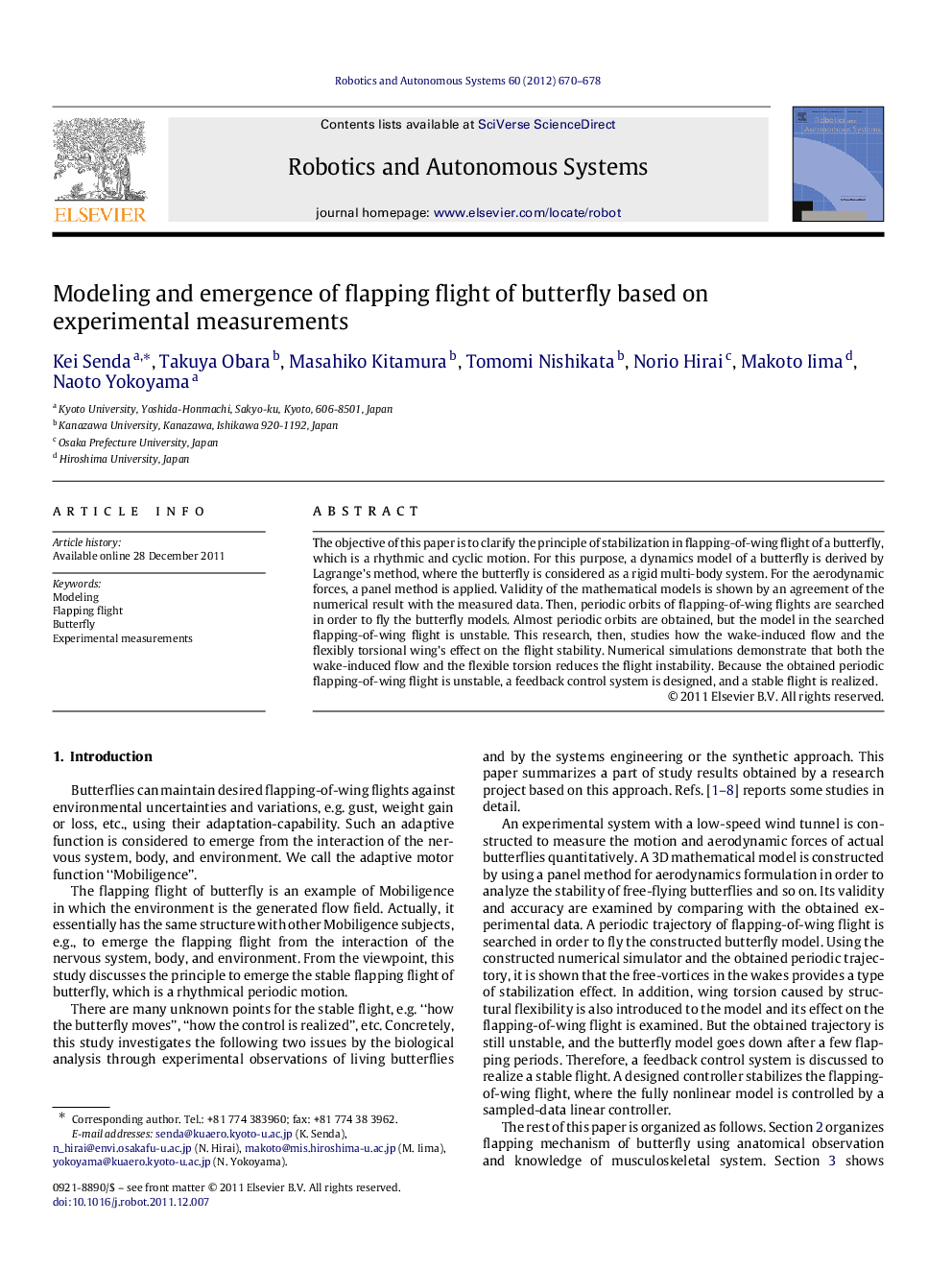| کد مقاله | کد نشریه | سال انتشار | مقاله انگلیسی | نسخه تمام متن |
|---|---|---|---|---|
| 411988 | 679602 | 2012 | 9 صفحه PDF | دانلود رایگان |

The objective of this paper is to clarify the principle of stabilization in flapping-of-wing flight of a butterfly, which is a rhythmic and cyclic motion. For this purpose, a dynamics model of a butterfly is derived by Lagrange’s method, where the butterfly is considered as a rigid multi-body system. For the aerodynamic forces, a panel method is applied. Validity of the mathematical models is shown by an agreement of the numerical result with the measured data. Then, periodic orbits of flapping-of-wing flights are searched in order to fly the butterfly models. Almost periodic orbits are obtained, but the model in the searched flapping-of-wing flight is unstable. This research, then, studies how the wake-induced flow and the flexibly torsional wing’s effect on the flight stability. Numerical simulations demonstrate that both the wake-induced flow and the flexible torsion reduces the flight instability. Because the obtained periodic flapping-of-wing flight is unstable, a feedback control system is designed, and a stable flight is realized.
► A dynamics model of a butterfly is derived by Lagrange’s method and a panel method.
► The mathematical model is accurate because its numerical results agree with the measured data.
► A periodic joint trajectory realizes a steady flapping-of-wing flight, but the flight is unstable.
► The wake-induced flow and the flexibly torsional wing reduce the flight instability.
Journal: Robotics and Autonomous Systems - Volume 60, Issue 5, May 2012, Pages 670–678